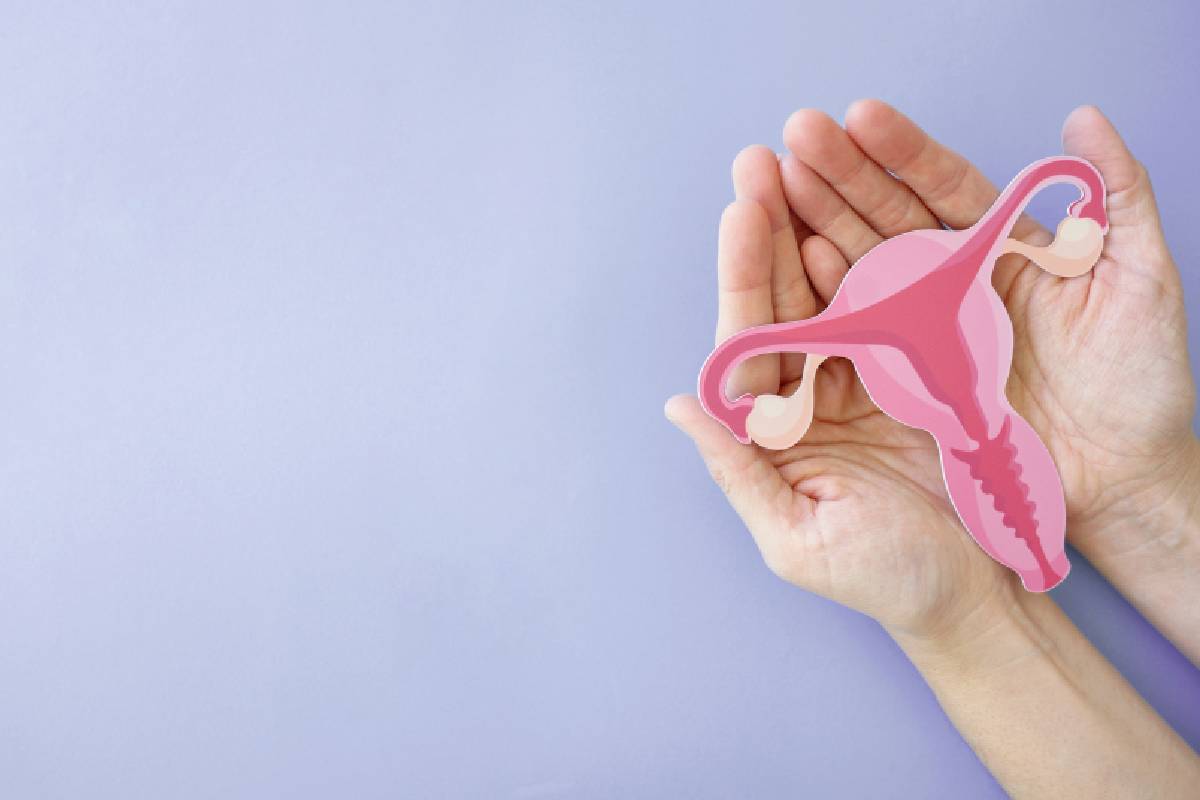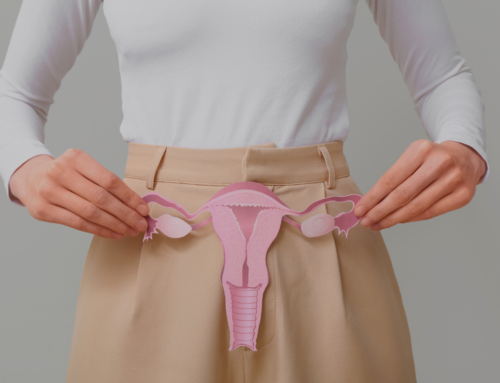
The menstrual cycle is a vital aspect of reproductive health, yet many individuals are unfamiliar with its phases and the insights it can provide about overall well-being. Understanding your cycle can help you recognize patterns, identify potential concerns, and take charge of your health. At A Woman’s Place in Naples, FL, we believe that knowledge is power, and we’re here to help you navigate every stage of your menstrual cycle.
Phases of the Menstrual Cycle
The average menstrual cycle lasts between 21-35 days and is divided into four key phases, each playing a crucial role in reproductive health.
- Menstrual Phase (Days 1-5)
- This phase begins with menstruation, the shedding of the uterine lining.
- Menstrual bleeding typically lasts between 3-7 days, with variations in flow and symptoms.
- Mild cramping, fatigue, and mood changes are common during this time.
- Follicular Phase (Days 1-13)
- Overlapping with the menstrual phase, this stage starts on Day 1 and continues until ovulation.
- The ovaries develop multiple follicles, each containing an egg, as estrogen levels gradually rise.
- This phase is essential for egg maturation and preparing the body for potential pregnancy.
- Ovulatory Phase (Around Day 14)
- A surge in luteinizing hormone (LH) triggers the release of a mature egg from the ovary.
- Ovulation is the most fertile period of the cycle, lasting about 12-24 hours.
- Some individuals experience mild pelvic pain, known as mittelschmerz, during ovulation.
- Luteal Phase (Days 15-28)
- After ovulation, the body prepares for pregnancy by increasing progesterone production.
- If fertilization does not occur, hormone levels drop, signaling the body to shed the uterine lining and start a new cycle.
- Premenstrual symptoms like bloating, mood swings, and fatigue may arise during this phase.
Common Menstrual Issues
While some variation in cycle length and symptoms is normal, certain menstrual irregularities may indicate an underlying condition.
- Irregular Periods: Missed or unpredictable periods may be linked to hormonal imbalances, polycystic ovary syndrome (PCOS), thyroid disorders, or stress.
- Heavy Bleeding (Menorrhagia): Excessive or prolonged menstrual bleeding may be caused by fibroids, polyps, or hormonal fluctuations. If you experience frequent heavy periods, consulting a healthcare provider is recommended.
- Painful Periods (Dysmenorrhea): While mild cramps are common, severe pain could indicate endometriosis, fibroids, or pelvic inflammatory disease (PID).
- Premenstrual Syndrome (PMS) and PMDD: PMS symptoms, including mood swings, bloating, and fatigue, are common, but premenstrual dysphoric disorder (PMDD) is a more severe form that can significantly impact daily life.
Tracking Your Menstrual Cycle
Monitoring your menstrual cycle can help you:
- Predict ovulation if you’re trying to conceive or avoid pregnancy
- Identify irregularities that may signal a health concern
- Track PMS or PMDD symptoms for better management
- Improve communication with your OB/GYN regarding menstrual health
There are many ways to track your cycle, including mobile apps, period journals, and calendar tracking. Recognizing changes in your cycle can empower you to take charge of your reproductive health.
Take Control of Your Menstrual Health
Your menstrual cycle is a window into your overall well-being. Whether you’re experiencing irregular periods, painful symptoms, or just want to better understand your cycle, our team at A Woman’s Place in Naples, FL is here to provide expert care and support.
For personalized guidance, contact A Woman’s Place in Naples, FL.
Further Reading:
The menstrual cycle is a vital aspect of reproductive health, yet many individuals are unfamiliar with its phases and the insights it can provide about overall well-being. Understanding your cycle can help you recognize patterns, identify potential concerns, and take charge of your health. At A Woman’s Place in Naples, FL, we believe that knowledge is power, and we’re here to help you navigate every stage of your menstrual cycle.
Phases of the Menstrual Cycle
The average menstrual cycle lasts between 21-35 days and is divided into four key phases, each playing a crucial role in reproductive health.
- Menstrual Phase (Days 1-5)
- This phase begins with menstruation, the shedding of the uterine lining.
- Menstrual bleeding typically lasts between 3-7 days, with variations in flow and symptoms.
- Mild cramping, fatigue, and mood changes are common during this time.
- Follicular Phase (Days 1-13)
- Overlapping with the menstrual phase, this stage starts on Day 1 and continues until ovulation.
- The ovaries develop multiple follicles, each containing an egg, as estrogen levels gradually rise.
- This phase is essential for egg maturation and preparing the body for potential pregnancy.
- Ovulatory Phase (Around Day 14)
- A surge in luteinizing hormone (LH) triggers the release of a mature egg from the ovary.
- Ovulation is the most fertile period of the cycle, lasting about 12-24 hours.
- Some individuals experience mild pelvic pain, known as mittelschmerz, during ovulation.
- Luteal Phase (Days 15-28)
- After ovulation, the body prepares for pregnancy by increasing progesterone production.
- If fertilization does not occur, hormone levels drop, signaling the body to shed the uterine lining and start a new cycle.
- Premenstrual symptoms like bloating, mood swings, and fatigue may arise during this phase.
Common Menstrual Issues
While some variation in cycle length and symptoms is normal, certain menstrual irregularities may indicate an underlying condition.
- Irregular Periods: Missed or unpredictable periods may be linked to hormonal imbalances, polycystic ovary syndrome (PCOS), thyroid disorders, or stress.
- Heavy Bleeding (Menorrhagia): Excessive or prolonged menstrual bleeding may be caused by fibroids, polyps, or hormonal fluctuations. If you experience frequent heavy periods, consulting a healthcare provider is recommended.
- Painful Periods (Dysmenorrhea): While mild cramps are common, severe pain could indicate endometriosis, fibroids, or pelvic inflammatory disease (PID).
- Premenstrual Syndrome (PMS) and PMDD: PMS symptoms, including mood swings, bloating, and fatigue, are common, but premenstrual dysphoric disorder (PMDD) is a more severe form that can significantly impact daily life.
Tracking Your Menstrual Cycle
Monitoring your menstrual cycle can help you:
- Predict ovulation if you’re trying to conceive or avoid pregnancy
- Identify irregularities that may signal a health concern
- Track PMS or PMDD symptoms for better management
- Improve communication with your OB/GYN regarding menstrual health
There are many ways to track your cycle, including mobile apps, period journals, and calendar tracking. Recognizing changes in your cycle can empower you to take charge of your reproductive health.
Take Control of Your Menstrual Health
Your menstrual cycle is a window into your overall well-being. Whether you’re experiencing irregular periods, painful symptoms, or just want to better understand your cycle, our team at A Woman’s Place in Naples, FL is here to provide expert care and support.
For personalized guidance, contact A Woman’s Place in Naples, FL.










